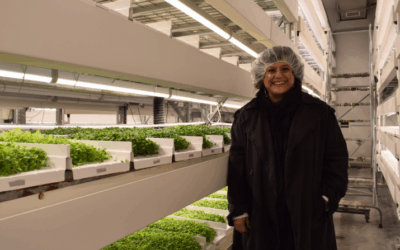Jackson residents take pride in the sustainable strides the community has made. For example, Town and county buildings operate on 100 percent renewable energy. The county is also committed to a “Road to Zero Waste” goal. As part of that goal, it aims to divert 60 percent of trash slated for the dump by the year 2030. But last month, residents faced a stark realization about their so-called sustainable community.
That’s when the Jackson Hole News&Guide reported that Teton County surpassed its 2008 record for the amount of trash it sent to the dump in a single month. And all that trash is a sign of a healthy economy — a majority of that waste came from construction debris from new buildings.
But those high numbers compel us to look at our own consumption.
Perhaps most consequential is our use of plastics. Plastics are so ubiquitous, in fact, that scientists recently discovered microplastics in Arctic snow. That was quite a surprise. Snow there was once thought to be some of the purest in the world. And closer to home, a scientist found microplastics in Colorado rainwater, another found them in Lake Tahoe.
These findings underscore the need to reduce our plastic consumption. After all, we don’t yet know the health effects that microplastics will have on humans or the environment, though the World Health Organization just announced last week that we don’t have the evidence to deem microplastics a hazard to humans.
But we also know that plastic is made from toxic chemicals like petroleum.
Here in Jackson, the town enacted a plastic bag ban this year, but if you consider that plastic is used to make so many of the products we use: storage and food containers, utensils, car parts, latex paint, rope, fishing nets, clothing, it is hard to escape.
Carrie Bell of Teton County Solid Waste and Recycling said the county recycles an average of 60 tons of plastic annually, (imagine 60 bison stacked on top of each other). She noted a small “upward trend in plastic recycling.” But it’s not clear if that’s because more residents are conscientiously tossing their plastics in recycling bins or using more plastic. “When you go to the store, you can clearly see everything is wrapped in plastic,” she said.
As people reckon with a cellophane-wrapped world, more research is coming to light about microplastics in our air, water and food. Preliminary research that just came out in another mountain community in the West is worth noting.
That research showed the presence of microplastics in Lake Tahoe. The study from the Desert Research Institute and Keep Tahoe Blue hasn’t pinpointed the source of the pollution, though. And that will be difficult to do given plastic particles can be transported through the atmosphere by wind and precipitation.
Regardless of the source, the presence of microplastics in such a vitally important body of water in the West has given residents there major pause. Lake Tahoe “is incredibly important” locally, nationally and internationally, said Jesse Patterson of Keep Tahoe Blue. “It’s one of the most visited places in the United States. More people come here than the three top national parks combined.”
In addition to economic importance, Patterson said, Lake Tahoe is a critical source of fresh water in an area of the country that has long battled droughts and their scorching widespread effects.
Patterson said it is important to note that this research is preliminary and more is needed. However, he hopes it will have a galvanizing effect on Tahoe’s already eco-conscious population. Ultimately, it’s about reaching visitors, he said. Akin to Jackson Hole, in Lake Tahoe land stewardship hinges on the messages that local agencies are propagating to millions of annual visitors about protecting the area’s pristine beauty.
“One thing we tell people is, there is a reason why you came here to visit, and we want to make sure it stays that way for the next folks that come.”
Listen above for the full conversation.






